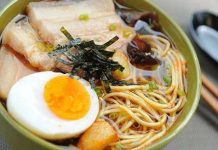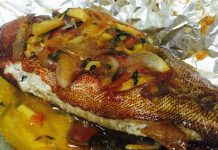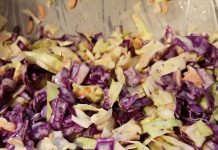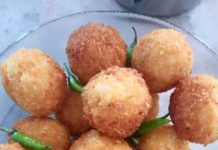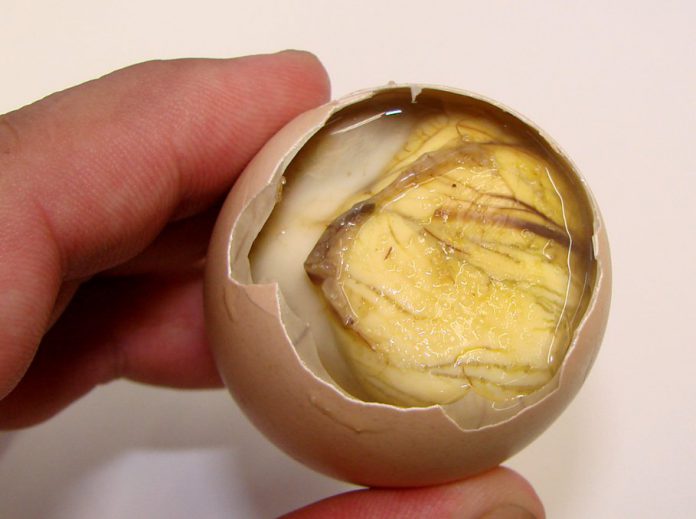High in protein, fat and cholesterol. Best eaten with a dash of salt and pepper!
A balut is a fertilized duck egg with a nearly-developed embryo inside that is boiled and eaten in the shell. They are considered delicacies of Asia and especially the Philippines, China, Cambodia, and Vietnam. Popularly believed to be an aphrodisiac and considered a high-protein, hearty snack, balut are mostly sold by street vendors at night in the regions where they are available. They are often served accompanied with consumption of beer. The Filipino and Malay word balut (balot) roughly translates to mean “wrapped”.
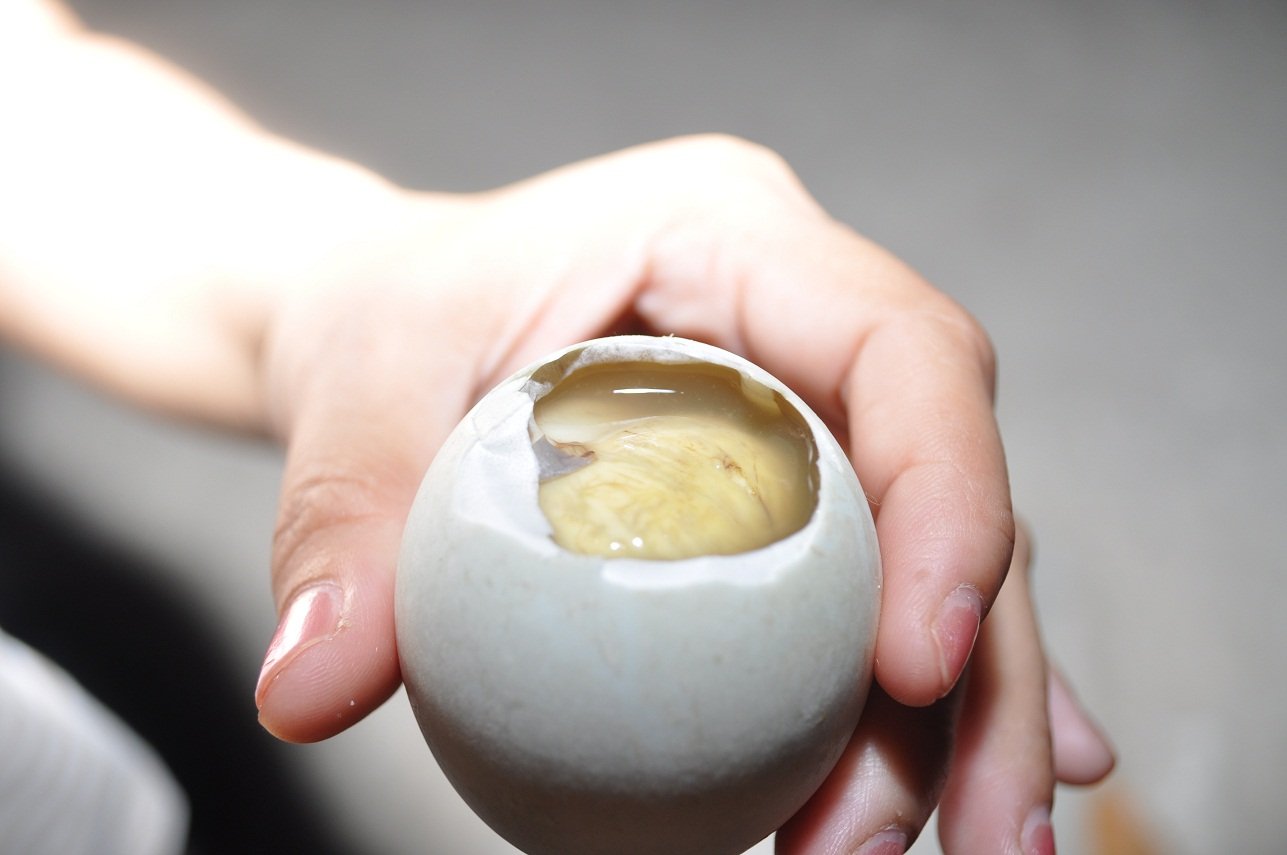
Method #1
- Select eggs that are fit for incubation. Eggs should come from mated flocks, and be not more than five days old. They should have thick shells without any cracks.
- Preheat the selected eggs under the sun for three to five hours.
- Heat some unpolished rice in an iron cauldron or vat until it reaches a temperature of about 42 to 42.5 °C (107 to 108 °F).
- Put 100 to 125 eggs into a large cloth made of either abaca (sinamay) or nylon.
- Place a layer of heated rice at the bottom of a cylindrical bamboo incubator basket (45 cm in diameter and 60 cm deep, and place a bag of eggs on the rice.
- Alternate the bags of eggs with the bags of heated rice. Eight bags of eggs will fit into the basket.
- Bamboo baskets can be arranged either in a single row along the wall of the balutan, or in double rows placed in the middle of the balutan. Rice hull is firmly tamped down between baskets as an insulator.
- Turn the eggs at least two or three times a day.
- Heat the rice in the morning and in the afternoon on cool days.
- Candle the eggs on the 7th, 14th and 18th day to select infertile eggs; D1 (dead embryo on first candling) and D2 (dead embryo on second candling). The infertile eggs, both D1 and D2, are removed, hard-boiled, and sold as a snack.
- Eggs containing a normal embryo candled on the 16th to 18th day should be hard boiled and sold as balut.
- Numerous entrepreneurs have successfully adopted this technology. However, marketing aspects such as demand for the product, promotional activities and pricing need to be considered. The shelf life of balut is one day, but this may be extended to one week if the eggs are kept in a refrigerator.
Method #2 (For Small Scale Industry)
- Prepare a big wooden box; line this with heated rice hull at the bottom about 6-8 inches thick.
- Arrange the eggs in bags of about 20-50 pieces each, put them on the heated hull and cover again with the same thickness of heated hull.
- Cover the box very well so as to prevent quick loss of heat.
- Every morning inspect the eggs to see if the rice hull needs reheating. The hull must be about 38°C.
- On the third day, examine the eggs against a bright light to see if the germ plasm has developed.
- This is the part of the egg that becomes the chick if the egg is fertile. If no germ plasm develops remove these eggs. These are sold as penoy. Put back into the heated hull those eggs with germ plasm.
- On the 13th day examine again the egg against the light. Remove the eggs without germ pasm. At this stage, those with developing germ plasm are the “balut sa puti”.
- On the 17th day the chicks will be growing little feathers. These may now be cooked.
Credits: agnet.org
